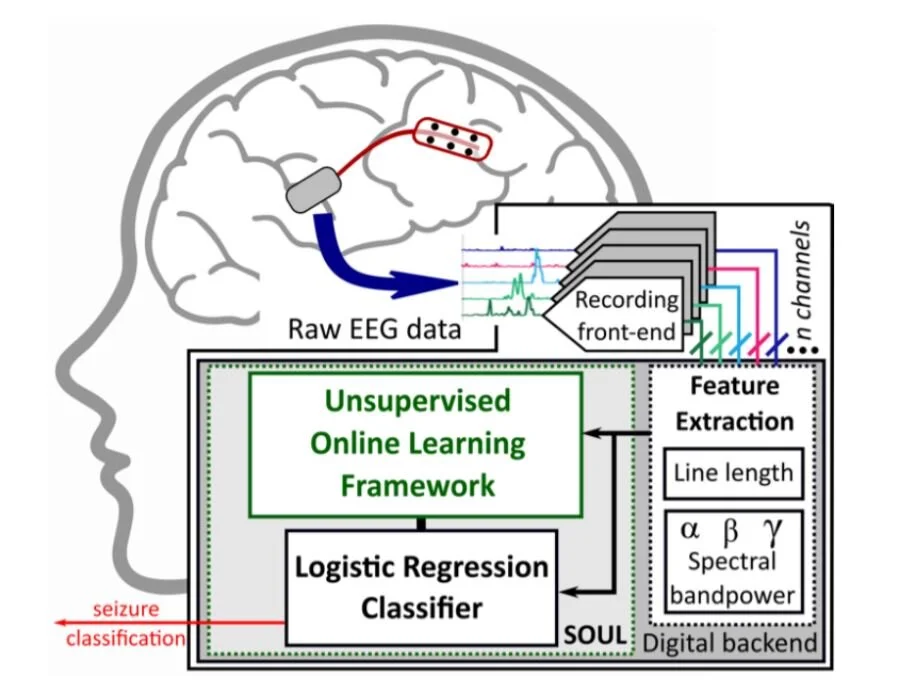SOUL seizure detection classifier paper now on arXiv
Adel’s paper on SOUL, an energy-efficient unsupervised online learning seizure detection classifier, is now available on arXiv. Read it here:
A. Chua, M. Jordan, and R. Muller, “SOUL: An Energy-Efficient Unsupervised Online Learning Seizure Detection Classifier”. arXiv (eess.SP), 1-Oct-2021, 2110.02169.
Implantable devices that record neural activity and detect seizures have been adopted to issue warnings or trigger neurostimulation to suppress epileptic seizures. Typical seizure detection systems rely on high-accuracy offline-trained machine learning classifiers that require manual retraining when seizure patterns change over long periods of time. For an implantable seizure detection system, a low power, at-the-edge, online learning algorithm can be employed to dynamically adapt to the neural signal drifts, thereby maintaining high accuracy without external intervention. This work proposes SOUL: Stochastic-gradient-descent-based Online Unsupervised Logistic regression classifier. After an initial offline training phase, continuous online unsupervised classifier updates are applied in situ, which improves sensitivity in patients with drifting seizure features. SOUL was tested on two human electroencephalography (EEG) datasets: the CHB-MIT scalp EEG dataset, and a long (>100 hours) NeuroVista intracranial EEG dataset. It was able to achieve an average sensitivity of 97.5% and 97.9% for the two datasets respectively, at >95% specificity. Sensitivity improved by at most 8.2% on long-term data when compared to a typical seizure detection classifier. SOUL was fabricated in TSMC's 28 nm process occupying 0.1 mm2 and achieves 1.5 nJ/classification energy efficiency, which is at least 24x more efficient than state-of-the-art.

